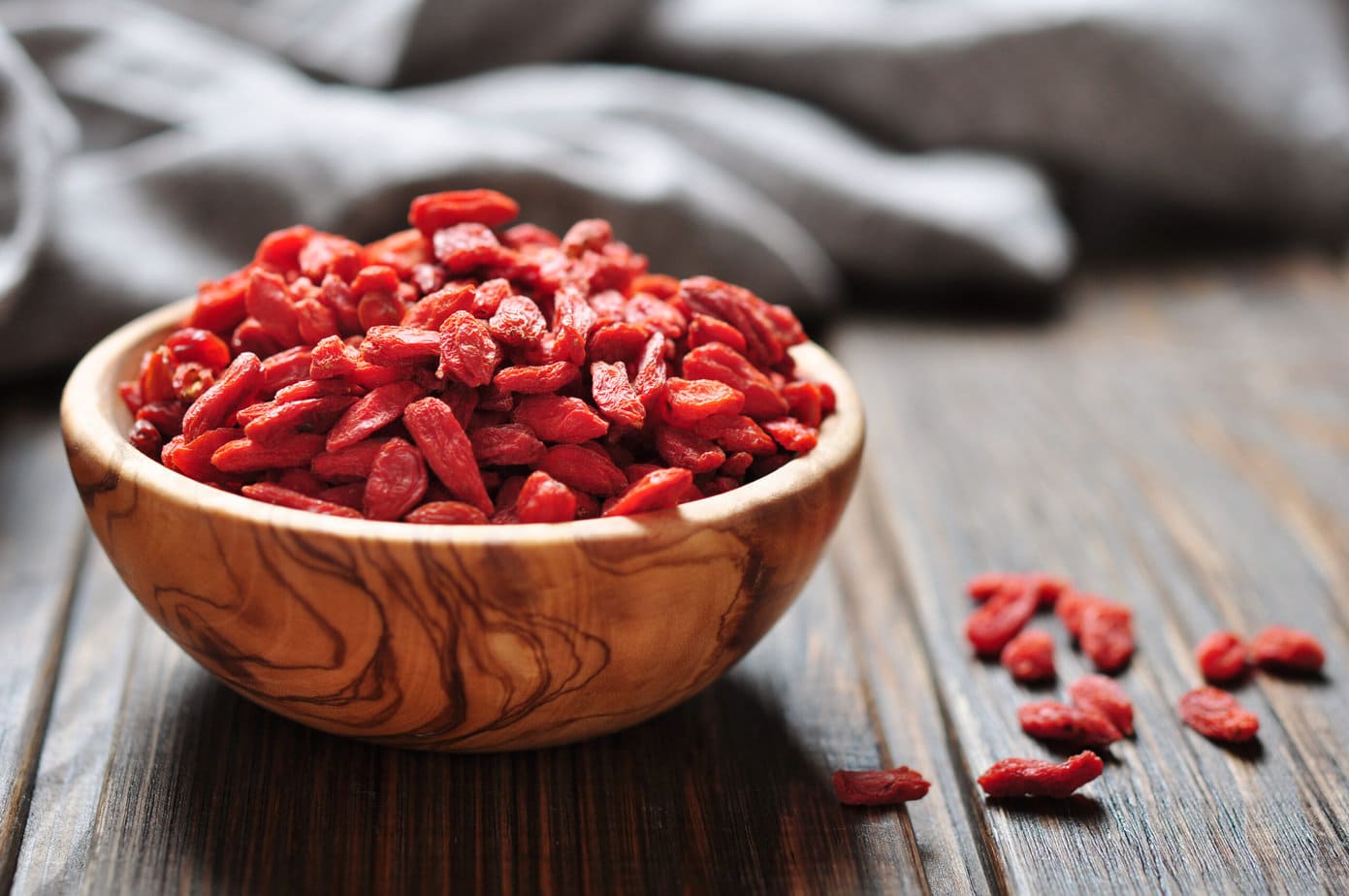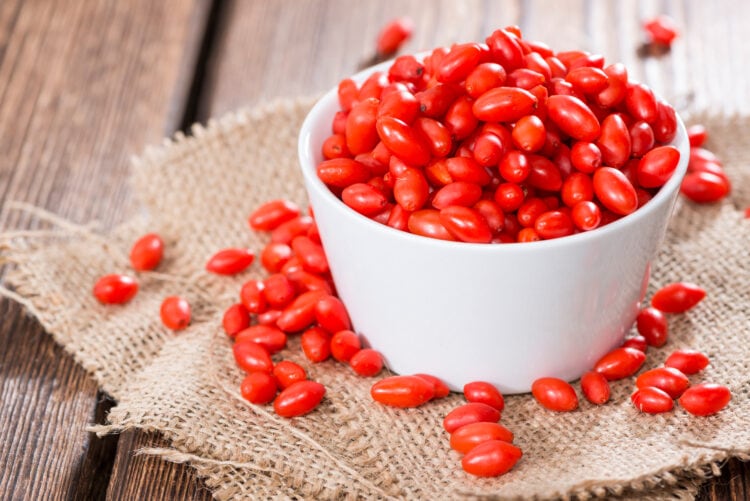Goji berries, also known as “wolfberries”, come from Lycium barbarum, a plant native to the Chinese regions and Mongolia.
Its fruits come in a wide variety, each with a slightly different taste; some are sweeter, others more tart. In addition to their great flavor, goji berries have long been used in traditional Chinese medicine for their health benefits.

Goji berries, what are they?
Goji berries are small reddish-orange fruits with a sweet-and-sour taste that grow on vines in Asia. To give you an idea, they look like tiny tomatoes, roughly the size of a grape.
Over the years this ingredient has become popular and is now found in several forms: dried, juice, capsules or powder… Fresh goji berries are much rarer.
They are imported directly from China and are often quite expensive. In most cases they are sold dried, ready to accompany your favorite dishes!

Where do goji berries come from?
Goji berries come mainly from regions of China and Mongolia where they have been cultivated for centuries.
The regions of Ningxia, Qinghai, Gansu and Xinjiang are specific growing and production areas where the climate is favorable, namely well-drained, sunny soil.
Today their production has spread worldwide; they are even grown in France. Nevertheless, China remains THE reference for them.a0
What do goji berries taste like?
Not to be confused with the jujube! It’s easy to mix them up, but they are two different fruits even if they look somewhat alike. Goji berries are more tangy and sour than they are sweet.
We can agree, however, that they still offer a good balance between sweetness, bitterness and acidity.

In any case, be aware that the taste varies according to the variety, origin and cultivation method. Always topped with a herbal note, some have the sweet flavor of tomato, others the more acidic taste of cranberry, but it is always subtle. Dried goji berries are the most flavorful— which is handy, because that’s the form most commonly sold.
What are the benefits of goji berries?
Above all, goji berries help regulate the immune system by strengthening our natural defenses on a daily basis. They are rich in nutrients, vitamins C, B1 and B2, and have anti-inflammatory and antioxidant properties.
They are recommended, for example, to improve eye disorders or treat high blood pressure. Goji berries are also said to fight bad cholesterol and diabetes. But they are famous above all for their benefits to the skin, hence the many cosmetic products made with goji berries! It is not surprising, then, that traditional Chinese medicine has long exploited their virtues.
Cooking with goji berries
There are many ways to use goji berries in cooking. If you have dried berries on hand, you can add them to all sorts of dishes, starting with breakfast in your bowl of cereal or oatmeal. And why not with some pancakes?
They make a great topping for desserts in general, but also for vegetable salads, adding flavor and texture. Goji berries are also interesting in soups, broths and stews thanks to their slightly sweet note that contrasts with the rest of the dish.
Goji berries also work well in smoothies and fresh juices. Feel free to rehydrate your dried berries with a little water before blending them. If you have goji berry powder, you can add it directly to your drinks: infusions, juices and flavored waters.
Where can you get goji berries?
Goji berries are almost always sold dried; it is rare to find them fresh. Nowadays you can find them in most supermarkets.
If you are looking for an authentic, high-quality product, you will definitely find some in an Asian grocery store. Otherwise you can buy them online.
How to store goji berries?
Store your goji berries in an airtight container, away from light and moisture. When dried, they will keep for several months.
Refer to the expiration date on the package. If you are lucky enough to get fresh berries, consume them quickly, within the next few days.

